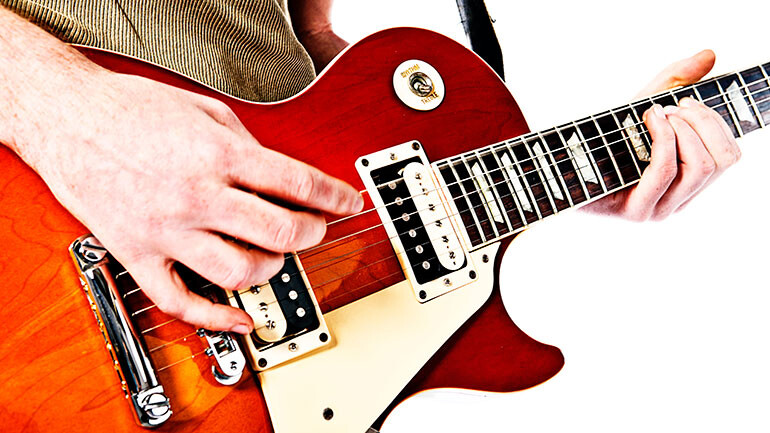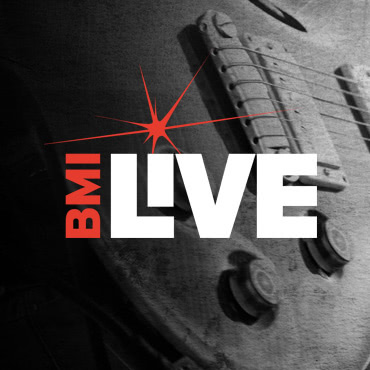Explorations in Guitar Colorations
Using a combination of mic placement skill and guitar mixology to achieve some supple six-string sounds

If you’re a guitarist, or just someone who wants to get better at recording one, here is a review of all things six-strings, including different types of electric and acoustic instruments, how body size and shape affects tonality, and most of all, how to use basic mic-placement variations to capture a really good-sounding instrument for regular use on your recordings.
Know your axe. What kind of electric sound are you looking for? Are you primarily a rhythm guitarist or a lead player? As you may know, electrics sport a variety of pickup configurations and also use different types of woods and construction (i.e., hollow body versus solid body) that help determine the guitar’s overall volume and tonality. In general, humbucking pickups offer a “hotter” output, while single-coil pickups deliver a more balanced, less-aggressive sound that is often preferable for rhythm players.
If recording off an amplifier, use your mic-placement skills to find the part of the speaker cone that sounds most tonally pleasing when listening through a set of headphones, which is often closer to the speaker’s edge, rather than straight down the middle.
Acoustic guitars also come in various sizes and shapes, from large-bodied models with deeper bass response, to three-quarter size guitars that lend themselves to fingerpicking or lighter, folk- or country-oriented music. While rosewood back and sides tend to provide a more balanced, rounder tone, guitars built from mahogany or even some composite materials tend to have a more neutral sound that often works better for studio applications.
A well-balanced guitar track will typically have a blend of both acoustic and electric instruments in order to give the listener a grab-bag of stringed tones. You can take this one step further by specifically including guitars that have a unique sound—when it comes to ethereal, it’s hard to top a good 12-string acoustic or electric, for instance.
Double it. Perhaps you’ve noticed that a lot of lead guitar you hear on record seems substantially “thicker” than what you might normally get out of your own instrument. The simple answer is that very often the lead has been doubled, giving the guitar a much meatier veneer in the process. While this trick can be used to fatten pre-conceived fills, intros and the like, it’s most effective when applied to an improvised solo—meaning that after the first lead has been cut, you’ll need to go back and learn to play the original note-for-note. Not an easy task, but by manually redoing the lead you’ll get a sound that’s wider and rounder than anything out of a box.
Re-tune it. Not that you always want to duplicate guitar parts note-for-note. When recording a pair of rhythm guitars, for instance, it’s helpful to have two distinct sounds, even when playing the same chords. How do you make that happen? For starters, by changing the chord voicing. One favorite trick is to detune the guitar one whole step, then transpose the chord progression—i.e., if the main guitar is in the key of D, you’d be playing the chords on the second guitar using E as your starting point. By the same token you can tune the guitar up, usually by using a capo (to avoid putting extra stress on the neck or having your strings break from applying too much tension). Again, the goal is to have a set of chords that contrast with the sound of the main progression.
Get balanced. Rather than tossing random parts onto the recorder to see what sticks, having some understanding of the way different guitars sound together enables you to make more thoughtful decisions when laying out your tracks. Having access to a vast guitar arsenal is helpful, no doubt, however even just a few different electric and acoustic guitars can provide more than enough tones to add sonic variety to your project. Contrast is key—for instance, if you’ve recorded an electric rhythm part using a single-coil guitar, adding fills and leads with a “fatter” humbucking pickup gives you a bit more sonic distinction. The same goes for acoustics—if your left-channel axe is a rosewood dreadnaught, adding a “flatter” mahogany or even plywood guitar for the right-hand side can help you avoid that feeling of sameness throughout.
And what about panning? If your track includes both an acoustic and electric, then placing each part opposite one another in the mix—say around 9 o’clock and 3 o’clock respectively—will generally work out. Regardless, use your ears while moving the tracks around until you find a spot that feels right.






Community
Connect with BMI & Professional Songwriters